► Jeep’s hybrid Avenger SUV driven
► Chunky baby SUV gains electrified petrol
► And it’s our favourite of the lot
And then there were three. Jeep’s Avenger range kicked off with the highly-acclaimed Avenger EV, followed by an ICE-only model, and now there’s the eHybrid – a hybrid that sits somewhere in between the two. The third pillar to the Avenger range promises to deliver some of the eco-credentials of a fully-electric car, with all the practicality of a conventional ICE-powered car. What it doesn’t do however, is promise performance, four-wheel-drive, or a ‘true’ hybrid experience – we’ll need to wait for the 4Xe for that.
Jeep is marketing this with the eHybrid moniker – but in reality it uses a small 0.9 kWh battery and 21kWh motor attached to the gearbox and starter motor. So is the Avenger a proper counterpoint to the fizzy petrol car and the EV, or is it worth waiting for the hybrid proper? To find out, we drove took a trip to Milan to drive the latest Avenger on and off the track.
Pros: Handsome looks, thrifty in town, not too heavy
Cons: Competent rather than exciting
What’s new?
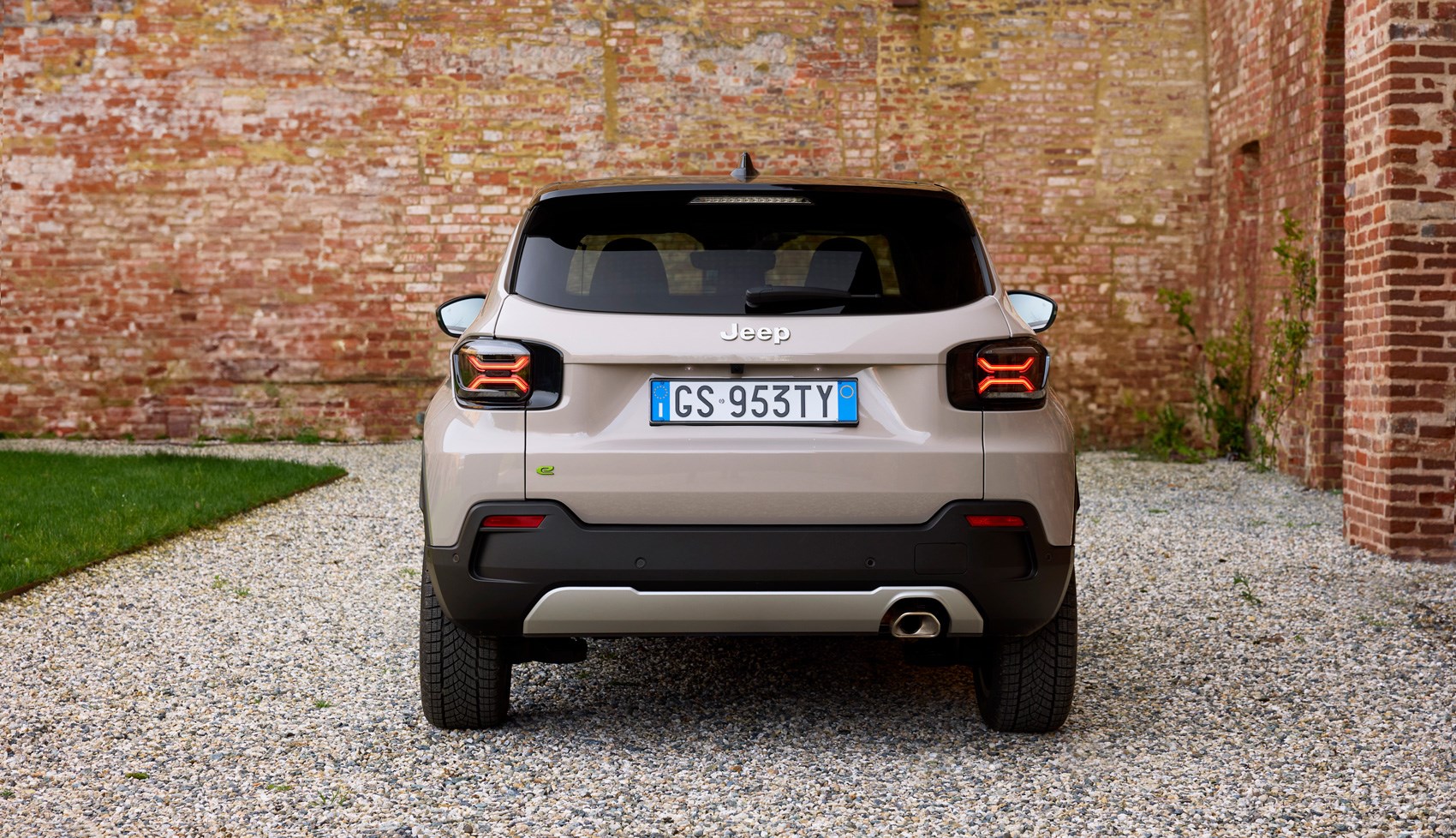
From the outside not so much. In the last three weeks we’ve driven both the electric Avenger (which you can soon read about in long-term reports, or in our review here) as well as the pure petrol one – and this looks identical. The only difference outside is a green ‘e’ badge on the boot and, compared to the electric one, an exhaust tailpipe. That’s not a bad thing though, as you’ll find the same surprisingly charming design on the outside, with modern lamps and a traditional-looking grille doing its best to pull Jeep into a more youthful/urban sector.
On the inside, the hybrid benefits from the same ‘utilitarian without being cheap’ look as the other Avengers. But we’ll skip to the interior later; the main difference here is the inclusion of a small hybrid system.
What are the specs?
Stellantis engineers have slipped in a 48V system that gives the same 1.2-litre turbo ICE as in the pure petrol car a helping hand. It’s very mild; a 0.9 kWh lithium-ion battery is paired to a 21kW motor, which itself is integrated to a 48V belt starter and a new-double-clutch six-speed transmission – the only one available with the eHybrid. That adds up to total of 127bhp and 151lb ft of torque, along with a 0-62mph figure of 10.9 seconds. Like the EV and the pure petrol that all goes to the front wheels – only the upcoming 4Xe will be all-wheel-drive.
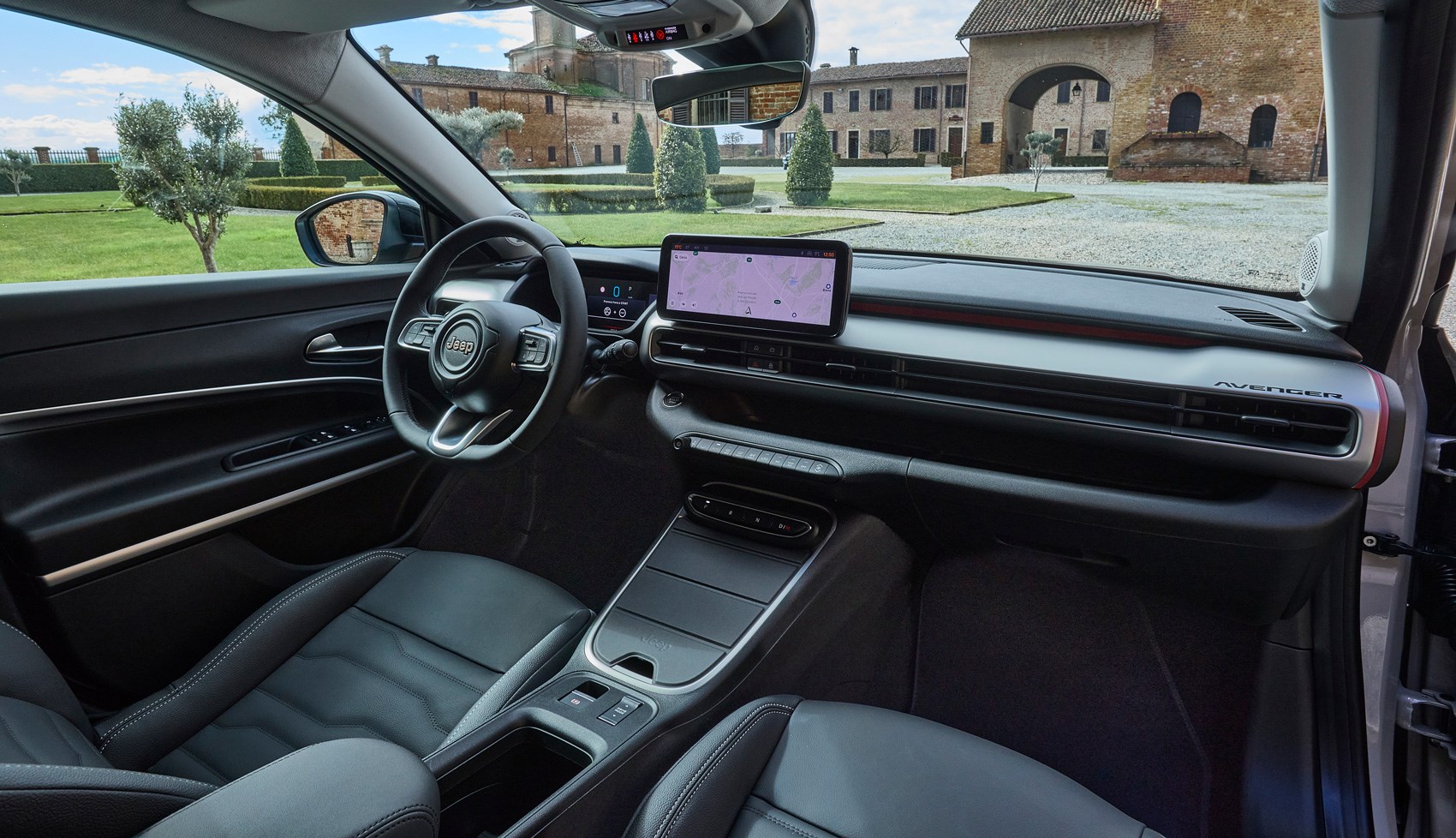
At 1280kg, the eHybrid isn’t much heavier than the standard car with Stellantis saying there’s just a 60kg increase over a conventional manual ‘box. Stellantis says the motor improves consumption by 20% and brings the fuel economy to 57.6 mpg.
How does it drive?
Somewhere in between the petrol and the EV – so exactly how you’d expect. In Normal and Eco modes, it’ll prefer to use EV power only in town, so it’s super refined in slow-moving traffic. And it’ll often turn off the engine when going downhill too. In Sport it’s a little more engaging, and just leaves the engine on at all times.
Steering strikes a mixture between feedback and ease; everything you’d expect in a car of this price point and sector. In the same way the brakes are solid too – and feel more connected you’d expect given the relative trickery going on behind the scenes. The only pity? You can’t change the level of regen feel like you can in some other hybrids.
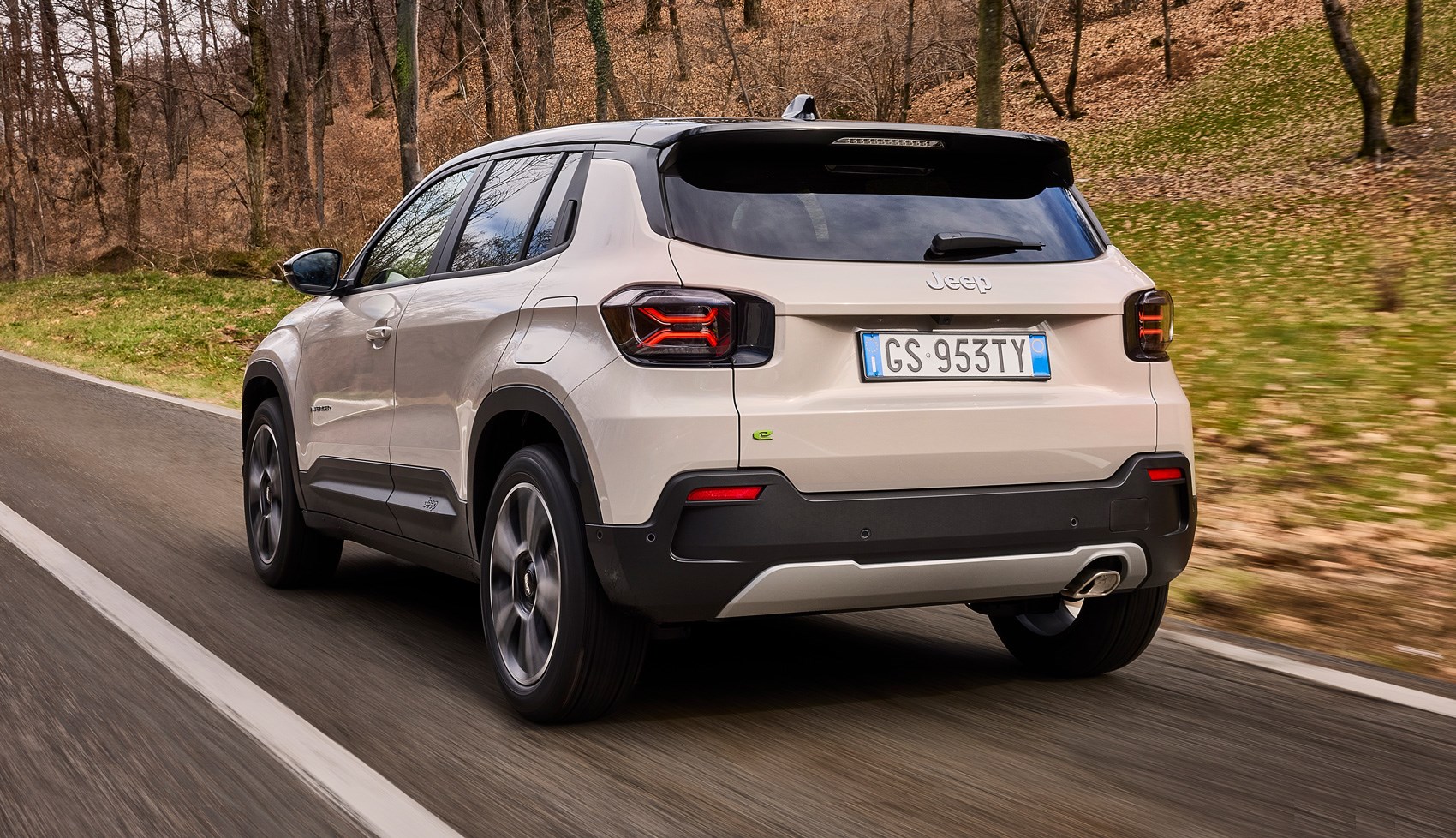
The gearbox is the final piece of the puzzle and does a decent if not inspiring job; it leaves this car feeling less interesting the manual petrol but still light enough to feel more dynamic than the EV. It sounds like it holds gears for a little longer than you’d expect, but that’s par for the course with these hybrid ‘boxes.
What about the interior?
The interior here is just like the other Avengers in the range, and that means that it’s functional without feeling cheap, but also without feeling premium if we’re honest. The spec means the interior can change, but on the whole it does the job. Annoyingly left-hand-drive cars get ambient lighting – something not seen on the UK cars.
Space at the front is fine, but those in the second row will feel pretty cramped and can often find themselves accidentally providing rear lumbar support for the front passengers. Sitting behind myself would’ve seen my knees either side of my spinal column.
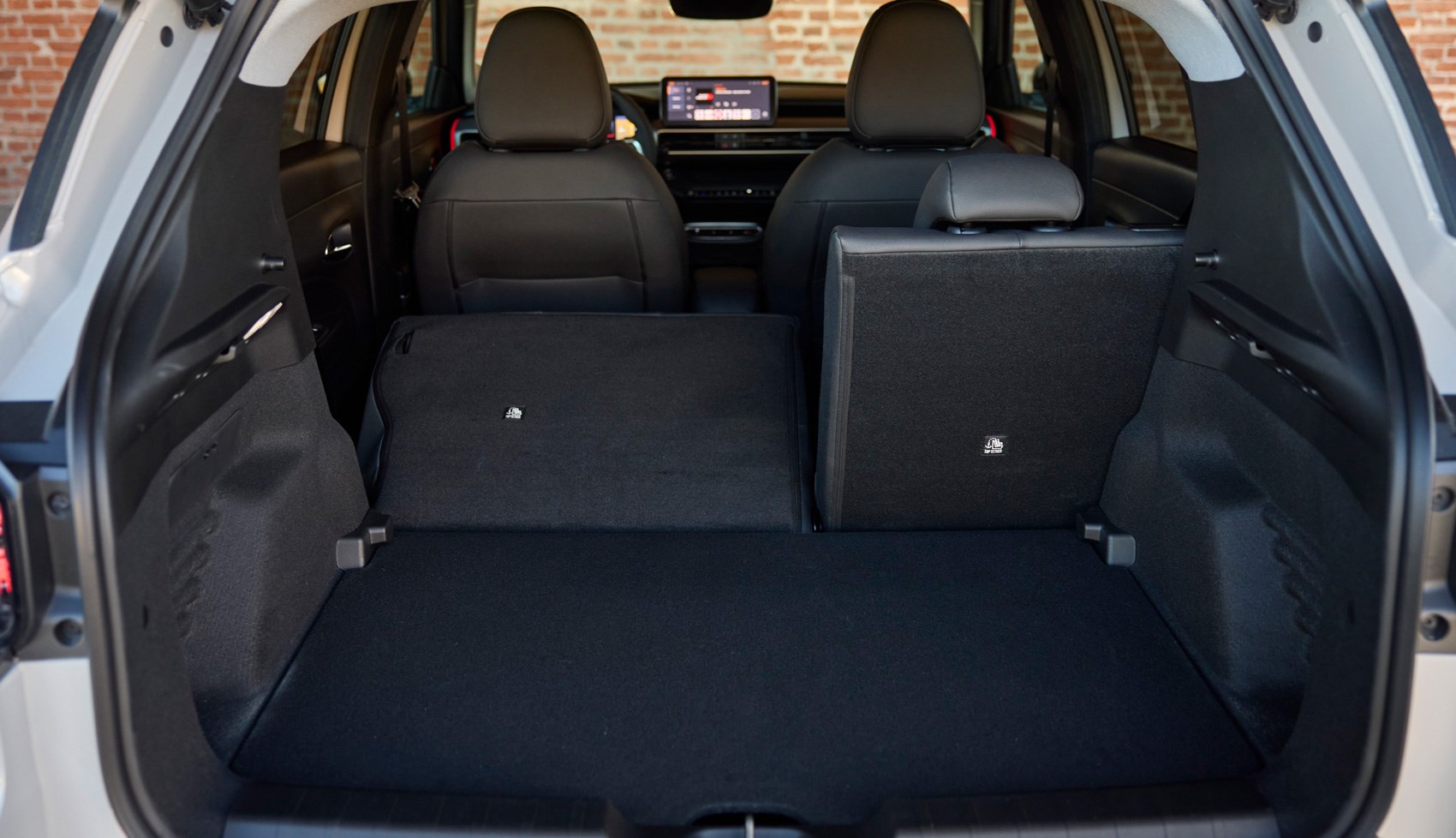
The boot is pretty small too, as it is on the other Avengers. The hybrid battery fits neatly under the left-hand front seat (drivers’ side in the car we drove) and that’s the only real impact to the interior space.
Tech-wise there’s AEB and cruise control on offer, and it’s not using capacitive buttons, so it actually works.
Comparison to rivals
The Avenger eHybrid’s most obvious competitors are probably to the left and right of it on the dealership floor – and in this respect the eHybrid has them both beat. It’s not as light or as interesting to drive as the manual petrol, but the eHybrid’s 48V system makes life easier in town, and will have real benefits in costs.
The eHybrid starts at £25,306 which isn’t too much more than the pure petrol at £23,600 – but it’s a significant chunk less than the £34,800 for the EV. For a lighter, slightly slower car that’s easier to live with, and often more interesting to drive we’d swerve the European Car of The Year for this.
We drove the top-of-the-range Summit version which starts at £29,200 and that adds 18-inch alloys, as well as other bits like a hands-free tailgate, wireless phone charger and heated front seats.
Jeep Avenger eHybrid: verdict
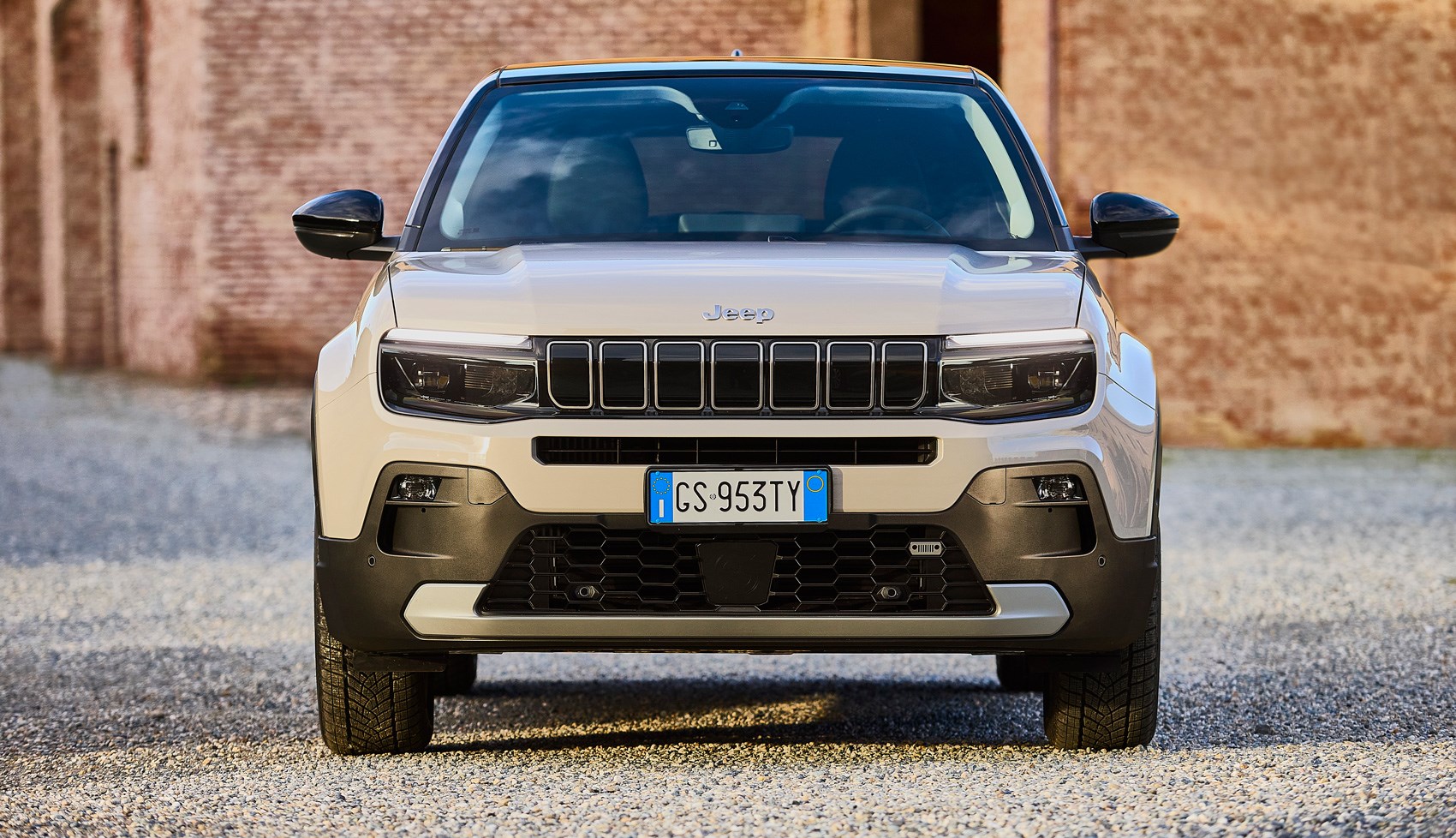
The Avenger range might not set the world on fire, but it’s a competent, often interesting car regardless of what powertrain you go for. The manual petrol is our favourite to drive while the EV brings the power and forward-thinking, but it’s the eHybrid that brings practicality with a small dash of agility and dynamism. The only catch? It’s front-wheel-drive layout doesn’t feel very Jeep to us – we’ll have to wait for the launch of the Avenger 4Xe to see something with two powered axles.